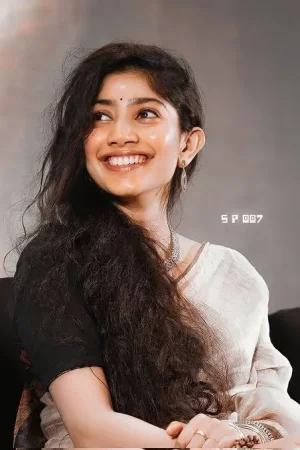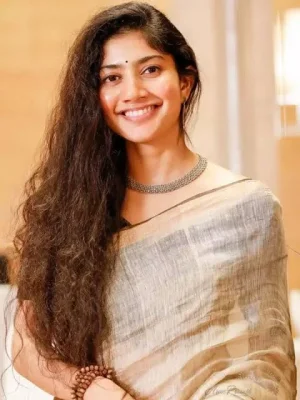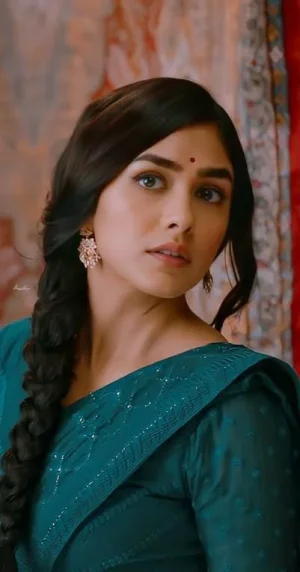You are using an out of date browser. It may not display this or other websites correctly.
You should upgrade or use an alternative browser.
You should upgrade or use an alternative browser.
Fall of Indian Film Industries (1 Viewer)
- Thread starter haldilal
- Start date
More options
Who Replied?- Joined
- Jul 7, 2024
- Messages
- 1,335
- Likes
- 4,502
after a long time, this bollywood movie look like intresting to follow in 2026 (if i will alive ).... this movie is ramayana. they drop their first music intro now. looking promising.
).... this movie is ramayana. they drop their first music intro now. looking promising.
View: https://youtu.be/gzUu-FJ7s-Y?si=mqJBkjXxUWyAwJAf
only character which i dont think fit with sita maa character is sai pallavi. i think she hvnt that type of grace to play sita maa. not talking about acting. Ranbir kapoor is ok choice for ram ji. as ravana role yash is looking good choice.
do u like sai pallavi as sita maa in this movie. or like me u think mrunal thakur is better option in looks nd grace (they will not going to replace her though ). or u guys hv better choice.
). or u guys hv better choice.




View: https://youtu.be/gzUu-FJ7s-Y?si=mqJBkjXxUWyAwJAf
only character which i dont think fit with sita maa character is sai pallavi. i think she hvnt that type of grace to play sita maa. not talking about acting. Ranbir kapoor is ok choice for ram ji. as ravana role yash is looking good choice.
do u like sai pallavi as sita maa in this movie. or like me u think mrunal thakur is better option in looks nd grace (they will not going to replace her though




Nehru's vision shaped many Bollywood golden oldies
NEW DELHI: Jawaharlal Nehru had a 70mm idea of India: secular, democratic and industrialised. And on his 120th birth anniversary, looking back to the time when he was the nation's first Prime...
Nehru's vision shaped many Bollywood golden oldies
Avijit Ghosh, TNN Nov 16, 2009, 05.56am ISTNEW DELHI: Jawaharlal Nehru had a 70mm idea of India: secular, democratic and industrialised. And on his 120th birth anniversary, looking back to the time when he was the nation's first Prime Minister (1947-64), one realises that many Hindi filmmakers had internalized this vision and their films reflect it.
"Nehru and his policies were always part of our sub-consciousness. He used to say that big dams and industries are the temples of modern India. We had internalized his words,'' says filmmaker Yash Chopra. He was in the capital earlier this month to participate in an ongoing film festival titled, Popular Bombay Cinema of the Nehru Era, at the Nehru Memorial Museum and Library.
Many films, including those made by Yash's brother BR Chopra, are filled with shots of big dams being constructed. There's a spirit of sharing and camaraderie among the workers, all united in the task of nation building. Songs such as Saathi haath badhana (Naya Daur, 1957) exemplify this.
Yash Chopra was only 27 when he directed Dhool Ka Phool (1959), where a Muslim brings up an `illegitimate' Hindu child. The song, Tu Hindu banega na Musalman banega, insaan ki aulaad hai, insaan banega, is very much in tune with Nehruvian secularism. His next film, Dharmputra (1961), where a Muslim boy grows up in a Hindu home, again is a compelling plea for secularism and embodies a liberal and inclusive vision of the country.
Nehru's vision impacted popular Hindi cinema in other ways too. For instance, says Ira Bhaskar of JNU's School of Art and Aesthetics, the Muslim in cinema was invariably a nationalist: noble and committed. The character of Nawab Badruddin played by Ashok Kumar in Dharmputra typifies this.
Undoubtedly, Bombay cinema took Nehru's notions of democracy and secularism to the masses and popularised them by making them understandable and pleasurable. But as Bhaskar points out, meaningful movies of this era also deal with caste (Sujata), gender, community, rural-urban debate, social and legal justice and also attempt to resolve the issues. "They express new imaginaries of selfhood that the modern moment with its liberating sense of individual freedom made possible,'' she says.
Movies such as Shree 420 sought to redefine the man-woman relationship. In the famous tea stall scene, when hero Raj Kapoor talks about hardship, heroine Nargis says that together the two can handle and overcome the situation. "The romantic relationship becomes a companionship of equals in every way,'' says Bhaskar.
Indeed, independence ushered in the zestful spirit of a free, young nation. Which is why, says historian Madan Gopal Singh, in the movies of Raj Kapoor and Vijay Anand we see the youth openly celebrate the idea of mobility and expand the idea of India as a culturally vibrant space. This is best expressed in the characters played by Dev Anand in Nau Do Gyarah and Raj Kapoor in Shree 420.
The evolving idea of love and romance was integral to the idea of 1950s India. "A song such as Pyaar hua, ikraar hua is as much about love as about emerging India. The lyrics Kehta hai dil rasta mushkil maloom nahi kahan manzil could be as much about the protagonists as about the anxieties of a nascent nation,'' says Singh.
Not all movies saw the bright side. Bhaskar points out that Guru Dutt's Pyaasa (1957) was a critique of the new nation's capitalistic impulse. "It asked whether there is any space for non-exploitative relationships between people, individuals and society,'' she says. Over 50 years later, it's a question that needs to be asked once again
‘If I am not a leftist, I am not an artist’
As “Haider” garners applause over the first weekend of its release, director Vishal Bhardwaj talks about his relationship with Shakespeare
urdu expansion was a political project which started after 1857, after mughal court fell farsi lost it's importance or rather brits crushed it, and urdu took it's place patronised by nawabs funding urdu newspapers and literature. and for bollywood, progressive writers association of bombay is the primary reason.

Murmurs of a Different Dream: Progressive Writers and Their Contribution to Indian Cinema
There was a phase, a period of wild expectation and tumult, when Progressive Writers and their inheritors ruled Hindi cinema.thewire.in

How CPI’s politics sapped Ipta of its vitality
A major reason for decline of Ipta was the CPI’s tight control over its cultural units which were forced to do propaganda Ipta entered the world of cinema. By 1946, Ipta members had done two films. Neecha nagar, released on September 29, 1946, was directed by Chetan Anand. The other was Dhartiwww.dailypioneer.com
Though Ipta was active till the CPI suffered a split in 1964, it was not even its shadow of the 1940s. Meanwhile, the cultural spectrum of India saw a sea change, as the entertainment of mass popular cinema, film music and commercial theatre gradually took over. After 1964, except Balraj Sahani, Kaifi Azmi, Habib Tanveer, Shabana Azmi, Javed Akhtar, etc., only a few popular faces involved themselves actively with Ipta. In Bengal, the new party CPI(M), born out of the split, got the Ipta name whereas the CPI renamed it as IPCA. However, at the all-India level, the CPI still owns the name Ipta. In 2017, Ipta celebrated its 75 years in Patna with a big festival with theatre, song and street plays.
The pseudo-secularization of Bollywood had begun in earnest in 1936, when the prejudiced brain of Sir Syed Ahmed Khan – father of the two-nation theory and promoter of Aligarh Muslim University, brought forth an organization to control the intellectual narrative, called the ‘Anjuman Tarraqi Pasand Mussanafin-e-Hind.’ For broader coverage, this bunch soon morphed into a leftist cult called the ‘Progressive Writers Association’ (PWA), which included Faiz, Manto, Rajinder Singh Bedi, Sahir Ludhianvi, Amrita Pritam, etc. Later, in 1943, the Communist Party of India under PC Joshi took the same PWA members and birthed a bigger entity called the Indian People’s Theatre Association (IPTA) boasting of Bimal Roy, Chetan Anand, Prithvi Raj Kapoor, Balraj Sahni, Kaifi Azmi, Utpal Dutt & so on[8]. Like most Communist activities, IPTA too was a deceptive front for their naked propaganda – first via theater and then via cinema. It was here that the Left got deeply rooted in Bollywood

From Namaste to Salaam: Bollywood's Islamization
How India's largest entertainment industry devolved from being the voice of India to becoming the voice of Pakistan?stophindudvesha.org

When Dilip Kumar Allegedly Offended Lata Mangeshkar By Saying ‘Urdu Of Marathis Is Like Dal And Rice’ & She Didn’t Speak To Him For 13 Years
When Dilip Kumar made a sly remark about Lata Mangeskar and it offended her so much that she didn’t speak to the veteran for 13 years
 www.koimoi.com
www.koimoi.com

Gulf region emerging as top overseas market for Bollywood films - Arabian Business: Latest News on the Middle East, Real Estate, Finance, and More
Saudi Arabia's decision last year to allow cinemas to open in the kingdom has added the importance of the Gulf market for Indian films
In 1958, Lata was nominated for the Best Playback Female Singer category at the Filmfare Awards. She later won the award, which was for her song Aaja Re Pardesi from the film Madhumati. But she refused to accept the trophy, because it was in shape of a lady who had no clothes on it. Later, the organisers wrapped up the award before presenting it to her

From Namaste to Salaam: Bollywood's Islamization
How India's largest entertainment industry devolved from being the voice of India to becoming the voice of Pakistan?
- Joined
- Jul 4, 2024
- Messages
- 380
- Likes
- 2,235
after a long time, this bollywood movie look like intresting to follow in 2026 (if i will alive).... this movie is ramayana. they drop their first music intro now. looking promising.
View: https://youtu.be/gzUu-FJ7s-Y?si=mqJBkjXxUWyAwJAf
only character which i dont think fit with sita maa character is sai pallavi. i think she hvnt that type of grace to play sita maa. not talking about acting. Ranbir kapoor is ok choice for ram ji. as ravana role yash is looking good choice.
do u like sai pallavi as sita maa in this movie. or like me u think mrunal thakur is better option in looks nd grace (they will not going to replace her though). or u guys hv better choice.
View attachment 42109
View attachment 42110
View attachment 42111
View attachment 42112
Hopefully its better than Adipurush. The only saving grace of that movie was that is had good song.
- Joined
- Jun 27, 2024
- Messages
- 2,951
- Likes
- 10,492
after a long time, this bollywood movie look like intresting to follow in 2026 (if i will alive).... this movie is ramayana. they drop their first music intro now. looking promising.
View: https://youtu.be/gzUu-FJ7s-Y?si=mqJBkjXxUWyAwJAf
only character which i dont think fit with sita maa character is sai pallavi. i think she hvnt that type of grace to play sita maa. not talking about acting. Ranbir kapoor is ok choice for ram ji. as ravana role yash is looking good choice.
do u like sai pallavi as sita maa in this movie. or like me u think mrunal thakur is better option in looks nd grace (they will not going to replace her though). or u guys hv better choice.
Looks like decent effort so far.
Let the proper trailer come before we can add any insights.
Users who are viewing this thread
Total: 1 (members: 0, guests: 1)

Latest Replies
-
Chinese Economy Watch
- rockdog
-
Indian Economy
- rockdog
-
Operation Sindoor & Aftermath
- randombully
-
Indian Air Force: News & Discussions
- randombully
-
DRDO & PSUs
- randombully
-
Small Arms & Weapons
- swesh
-
Indian Culture and society
- Doreamon
-
Indian Navy Developments & Discussions
- vampyrbladez
-
Indian Special Forces
- KumaoniReborn
